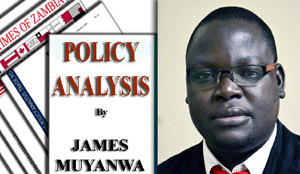 LAST week we looked at the amended Zambia Revenue Authority (ZRA) Value added Tax (VAT) Rule number 18.
LAST week we looked at the amended Zambia Revenue Authority (ZRA) Value added Tax (VAT) Rule number 18.
In essence, the amendment narrows down to how the Government will get lower taxes from the mining sector, as more VAT will be refunded to the mines and other exporters.
The crusade for the amendment was spearheaded by the Zambia Chamber of Mines (ZCM) and that is understandable in that the chamber’s main preoccupation is to safeguard the interests of the mining houses in Zambia, sometimes even at the expense of the nation.
Just to refresh the readers’ minds the chamber’s proposals towards the 2015 National Budget were apart from the VAT rule on capital allowances, premium discounts, the 10 per cent export duty on concentrates and VAT on importation of cobalt concentrates.
To balance up on the situation I will today look at the flip side of the chamber’s proposals from where I have fished out an old and yet still contentious issue of the need for windfall tax.
There are always arguments from the Zambians that the mines are not contributing as much as they should to the local economy, hence the enduring calls for tax changes including windfall tax.
For instance last year, the Government collected mineral royalty of only K1.8 billion which was 8.4 per cent lower than projected, according to the 2013 Annual Economic Report.
In the year when the mines earned more than $7 billion from the metal exports, the K1.8 billion mineral royalty was far below the K5.7 billion raised from the Pay As You Earn (PAYE) for the same period.
The paradox is that since early 2000s, mining investments have risen; with more than $10 billion in Foreign Direct Investments (FDI) since privatisation but the boom has had no corresponding soar in mines’ contribution to the nation.
According to the 2013 International Council of Mining and Metals report on Zambia, in 2011, new FDIs into mining accounted for 86.2 percent of the total FDIs while export of copper mining accounts for?over 80 per cent of export earnings.??This is a high share even in comparison to other mineral-dependent countries.
Within the overall balance of payments, copper export earnings are partly offset by foreign exchange outflows some of which are highly suspected to be through transfer mispricing and other dubious routes.
This is further compounded through investors’ profit repatriation and suspicious debt servicing, which counter the balance of payments inflows from mines.
According to some Bank of Zambia data, Zambia’s external trade surplus which is around $2.7 billion is offset by external (outward) transfers of $1.5 billion annually.
The perennial story is that local observers argue that the contribution of the mining sector to the national economy can be augmented.
It is for that reason that the Government, through the Mining and Minerals Act 2008 introduced the windfall tax.
This, according to Investopedia, an on-line investment education resource, is a tax levied by governments against certain industries when economic conditions allow those industries to experience?above-average profits.
Windfall taxes are primarily levied on the companies in the targeted industry that have benefited the most from the economic windfall, most often commodity-based businesses.
As with all tax initiatives instituted by governments, there is always a divide between those who are for and those who are against them.
This short-lived tax was abolished a year later and will, seemingly, never come back.
In mourning it, its strong campaigners, however, contend that it is the best way of ensuring that the investors plough back resources into the host country.
They dismisses assertion that the windfall tax is counter investment saying that the level at which the tax starts operating is over and above the production costs leaving profits for the investors.
For instance, in 2008 it was based on the prices of copper on the international market meaning that the higher the prices the higher the taxes.
Then the grading were 25 per cent tax when the copper price is at least £2.5 per pound, 50 per cent when the copper price is three pound per pound and 75 per cent for £3.5 per pound.
The country lost out on revenue of about three years when the copper prices went as high as $10,000 per tonne.
The prices used were those prevailing at the London Metal Exchange (LME) to ensure uniformity and predictability.
Another advantage about the windfall tax is that it is self-adjusting meaning that when the copper prices are extremely low there would be no charge at all as it will cease to operate.
Unlike the taxes on profits which can easily be manipulated by overstating the cost of production, as it is allegedly happening now, the windfall tax is not determined by the expenditure levels of the mines.
Arguably, the windfall tax is the only way the Government would ensure that the mining investors contribute meaningfully to the local economy especially considering that minerals are wasting assets.
Given the opposition against the 2015 mining tax regime by the some mine houses including the ZCM, I would like to know what their stance is on the need for them to pay more taxes through other taxes like the windfall tax.
Comments: 260 0955 431442, 0977 246099, 0964 742506 or email:?jmuyanwa@gmail.com.






